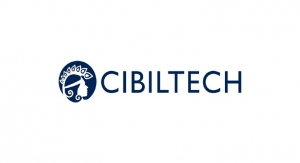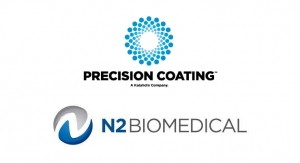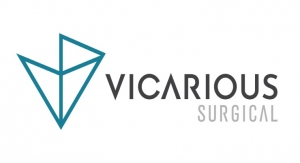Mark Crawford, Contributing Writer04.08.14
Many critical medical devices and instrumentation rely on tubing to deliver life-saving performance. As this equipment becomes smaller and more complex, more functionality is required from the tubing components. This means smaller inner and outer diameters, tighter tolerances, multiple lumens and lumens with variable geometries and co-extruded materials, as well as enhanced strength, flexibility, pushability, lubriciousness, kink resistance and antimicrobial properties.
For example, some medical device manufacturers are building products that require tubing as small as 0.1 millimeters (0.004 inches) interior diameter (ID), with a wall thickness of 0.05 millimeters (0.002 inches) and a tolerance of 0.0005 inches—a fraction of the size of a human hair. Catheter sizes can be as small as 1 Fr—and that’s with coil reinforcement, not just a simple extruded tube.

Reinforced braiding can produce stiff but flexible tubing. Image courtesy of VistaMed/Helix Medical.
Extrusion services for the medical device industry include single lumen, multilumen, microextrusion, reinforced (braided), co-extrusion (multi-layer), layflat, and thin-walled tubing. An increasing number of thermoplastic and silicone materials are suitable for these processes—individually or combined, such as silicone and polyurethane co-polymers. Tubing can even be extruded around electronics or metal wires, eliminating the need to hand-feed them through the lumen. Extruding companies also are working hard to provide additional services, which strengthens their OEM relationships and improves the security of their supply chains.
Of course, as devices get smaller and more complex, and capabilities of extruding processes continue to expand, OEMs expect higher tolerances that are consistent and repeatable.
“The majority of the extrusions we manufacture are one part of a more complicated device,” said Paul Mazelin, manager of strategic accounts for Specialty Silicone Fabricators, a Paso Robles, Calif.-based provider of silicone extrusions for the medical device industry. “OEM efforts to automate secondary operations are driving tighter tolerances for the parts we produce. We routinely manufacture extruded products with tolerances of plus or minus .001 inches. More recently, however, customers are requesting plus or minus .0005 inches for certain critical dimensions. We can also produce extruded tubing with wall thicknesses as thin as .003 inches, to take advantages of the permeability properties of silicone.”
OEMs are not shy about telling their extrusion partners the extra services they want them to provide, while still satisfying cost targets and timelines. Faster turnaround on orders is a top priority for every medical device manufacturer (MDM). For example, many large firms are trying to save money by reducing inventories of on-hand product for construction of finished devices. This is forcing extruders to respond more rapidly to orders. These quick turns are typically the result of lean or just-in-time programs, often with orders expected to ship within 24 hours.
In order to accomplish all these OEM expectations, extrusion engineers continue to push the edge of the envelope when it comes to using equipment more efficiently, best manufacturing practices, and innovative ways to extrude advanced materials, combine materials, and design new tooling and production processes. By doing so, they add valuable services that better serve their OEM clients, shorten OEM supply chains, and expand the vendor’s knowledge base.
Material Combinations
As medical tubing designs become more complex, production processes must adapt to meet OEM demands. This typically requires several different manufacturing steps and bonding. Multi-layer extrusion, or reflow, often is used to improve functionality or to combine a weldable OD (outside diameter) material with additional substances that add performance properties.
“OEMs are continuing to push the envelope for material combinations, especially with regards to multi-layer extrusions,” said Tom Moore, technical sales manager for Raumedic AG, a German provider of thermoplastic and silicone extrusion technologies with U.S. operations in Leesburg, Va. “For example, co-extrusions with silicone and thermoplastics, with a strong bond between the two layers, are in high demand. The silicone material on the outside offers flexibility and strong bonding characteristics with fittings, while the thermoplastic materials provide barrier properties.”
One of the most challenging aspects of co-extrusion is getting the silicone to adhere to the increasing variety of substrates that are requested by OEMs for multi-layered designs.
“Sometimes a primer or preparation of the surface by plasma or corona etching is required to enhance bonding,” said Mazelin.
“Silicones bond readily to themselves, so there are typically no issues for layered silicone extrusions.”
Mazelin noted there is increased interest by designers in the chemical-resistance properties of various silicone polymers.
“For example, fluoro silicones or diphenyl silicones exhibit better chemical-resistance properties than do the significantly less expensive poly dimethyl siloxane silicones,” he said. “In order to provide tubing with the proper chemical-resistance properties, and still control the costs, we can jacket the less-expensive material on the outer diameter to provide much less expensive structural support.”
Sometimes OEMs don’t realize that all plastics cannot be extruded together when it comes to multi-layer products, which can lead to re-design or different material selections.
“Because many plastics are incompatible in terms of their heat profile, they cannot be co-extruded,” added Moore. “There is also concern with bonding—even materials with similar melting points sometimes need tie-layers so they can be properly adhered to each other.”
Polymer Solution Casting
With most co-extrusion technologies, bondable materials are located either on the OD or ID for ease of assembly of complex medical devices. It’s a multi-step process—depending on the complexity of the part or product and performance expectations, some extruders provide up to three or four materials on an extrusion run, followed by multiple pass options. Many of these materials are not ideally compatible for bonding and require a tie-layer to hold them together, or a multiple-step lamination process.
An alternative to co-extrusion is polymer solution casting, which utilizes a liquid polymer layering process to create an “all in one” continuous piece with no bonded joints and increased design flexibility. Polymer solution casting provides the ability to add multiple components and varying wall thicknesses or diameters along the length of the device. It also is possible to embed components in virtually any configuration—a production capability that expands the range of design possibilities for medical device engineers.
“Polymer solution casting technology lends itself especially well to advanced catheter-shaft design,” said Ronelle Decker, market development manager for Avalon Laboratories LLC, a Rancho Dominguez, Calif.-based medical device manufacturer that specializes in wire-reinforced catheters for cardiology and pulmonology. “For example, laser-cut hypotube shafts can now be incorporated into catheter construction. These hypotubes provide a greater range of column strength and steerability, with the polymer acting as a very thin biocompatible barrier between the body and the device.”
Liquid polymers also can be used to encapsulate the hypotube and incorporate an extruded inner surface such as polytetrafluoroethylene liner with good material adhesion. This is completed more readily with polymer solution casting, compared with other extrusion processes.
Multilumen Steering Systems
There also is increased interest in multiple lumen steering catheter designs. This is in response to the more complex needs related to improved navigation and anatomical access for ablation, electrotherapy and delivery devices in development.
Medical device engineers and designers increasingly are interested in using materials that can be layered and overlapped to create hard and soft sections, with transitions as gradual or as abrupt as needed. They also want to embed reinforcement features for more complex medical devices, where the outer layer is biocompatible to the therapy, and the inner layers accomplish device functionality (examples are radiopaque markers, reinforced inserts, coils, hypotubes, and formed and cut tips)—all in a single continuous construction.
“It is challenging, however, to produce multiple lumens with variations along the length for the desired strength and flexibility, which typically requires different materials and layers, and more manufacturing processes,” said Decker. “Polymer solution casting can accomplish this with higher precision.”
Specialty Silicone Fabricators has the capability to change the cross-sectional configuration during extrusion, which allows engineers to design features into the manufacturing of their catheter systems that reduce secondary operations. A good example is the one-piece wound drains the company manufactures.
“We were able to take a design that required three separate and distinct pieces and combine them into one part,” said Mazelin. “We did this using sophisticated tooling that changes configuration during the extrusion process. This then allowed us to eliminate two labor-intensive bonding steps.”
Raumedic continues to enhance its capability to co-extrude wires across a wide variety of tubing materials. Data transmission, electronic impulses and even radiation therapy all are areas that increasingly rely on the co-extrusion of the wires that deliver data or current. For many products, it is fairly common that the wires, cables and coils are hand-strung though the multi-lumen tubing of the product, a very labor-intensive process.
To eliminate this process, Raumedic has developed the capability to co-extrude various metal wires and glass fibers within the tubing walls.
“This has allowed us produce a co-ex wire with an OD of only 0.1 millimeters (0.004 inches),” said Moore. “Fabrication costs can be significantly reduced when wires can be co-extruded within the tubing.”
Material Demands
OEMs increasingly are interested in making products from advanced or highly engineered thermoplastic resins, such as polyetheretherketone (PEEK). Material producers continue to engineer new hybrids and blends that have enhanced characteristics such as strength, heat and chemical resistance, flexibility and durometer. This creates more design options for MDMs that significantly can reduce development time and production costs (especially with prototyping and molding).
Because of its unique qualities—especially strength, purity, chemical resistance and ease of processing—PEEK continues to attract serious interest as a high-performance thermoplastic that can replace metal. Some companies, like Teleflex Medical OEM, a Gurnee, Ill.-based extruder of fluoropolymers for the medical device industry, can extrude PEEK products with walls as thin as .006 inches and tolerances of +/- .0015 on ID/OD.
Silicone is another material that can be engineered to improve physical characteristics. It is available as long-term-implant, medical, and pharmaceutical grade and can be extruded in several forms, including single and multiple lumen and braided/reinforced tubing.
Helix Medical, a Carpinteria, Calif.-based provider of silicone extrusion and molding for the medical industry, has noticed increased demand for silicone from its customers.
“We are searching for very resilient silicones with very specific mechanical properties,” said Allen Stadtmiller, director of engineering for Helix Medical. “This can be challenging, since silicone can vary significantly from lot to lot. Our clients are especially interested in key performance factors such as resilience, high fatigue life and repeatable hysteresis. We also work directly with material suppliers to develop new materials for specific applications.”
Some of these applications include feeding tubes, catheters, implants, minimally invasive devices and sealants.
Material suppliers also are becoming more stringent regarding the classifications of their materials used in medical applications.
“Many suppliers are renaming materials that were commonly used in the medical industry with a more specific nomenclature,” said Moore. “For example, the difference in the medical-grade materials is usually very slight as the material is the same, but the quality standards are now higher with regards to the production of these materials.”
Expanded Capabilities
OEMs expect their extrusion partners to add services and capabilities so they can better control costs, shorten their supply chains, improve response time and share risk. In response, extruders are adding new technologies, developing new processes, technologies and materials, participating more in design-for-manufacturability studies and adding more secondary processes to speed up quality control and inspection, shipping, sterilization and delivery.
MDMs are in hot pursuit of safe, advanced materials that have the ability to improve the capabilities of tubing—especially for minimally invasive procedures, catheter deployment, and imaging.
For example, over the past five years Avalon Laboratories has experienced steady volume growth in complex, wire-reinforced medical tubing. As a result, the company is expanding its manufacturing capabilities, with plans to almost double its manufacturing footprint over the next 12 months.
“We are also developing a new process to create discrete material changes along the length of a tube with a smooth, elongated transition between two materials that represent the hardest and softest desired durometers,” stated Mike Janish, CEO of Avalon. “This minimizes multiple material layering and eliminates multiple bond joints along with stress risers at material boundaries. As a result, materials adhere to each other without bonds and risers, creating a smooth surface finish.”
Avalon Laboratories continues to work with liquid-based, thin-film polymers to develop new materials for unique applications. These include polyether block amide, radiopaque and translucent polyurethane compounds, as well as lubricious materials. As the world of imaging continues to evolve, and exploratory devices become smaller and more compact, there is increased need for flexibility and radiopacity. To eliminate the use of metal compounds as markers, the industry is looking toward base polymers to provide this function.
“For example,” said Decker, “Polyone recently introduced Nue View to provide such a unique material. Avalon is currently looking to create its own liquid polymer, based on this technology.”
Because PEEK is nonmetallic and does not contain any ferromagnetic materials that can interfere with magnetic resonance imaging, it also is in demand for exploratory devices. “PEEK also has good pushability and torque properties,” said Jessica Lenhardt, director of marketing for Teleflex Medical OEM. “For these reasons, PEEK is experiencing a surge in demand, especially for cardiovascular, neurovascular and orthopedic applications.”
To meet these and other customer demands, as well as condense lead times, Teleflex Medical OEM recently expanded the capabilities of its global network of extrusion facilities to increase its capacity to extrude reinforced tubing from ultra-small 1.1 Fr to 35 Fr. Other services include customization of color, color match and compounding, and more full-extrusion lines located in controlled environments. It also has added secondary processes such as adhesive/solvent bonding, coil completion, etching, flaring, tapering and sterilization.
“We can now make the pitch of the coiled catheter significantly tighter than what can be achieved with a hand-assembled catheter,” added Sean Lynn, engineering manager at the Teleflex Medical OEM facility in Limerick, Ireland. “For example, pitches of 1.2x are possible in the tightly wound region, while maintaining excellent lamination. On the proximal/hub end, the pitch can be relaxed to 3-5:1 to provide kink resistance while maximizing tensile strength. It also avoids any ovalization of the inner lumen when it’s deflected.”
Helix Medical recently has added in-house reinforced braiding capabilities to its Carpinteria operations. In-house braiding gives the company better control of lead times and allows its engineers to develop unique solutions for its customers—for example, tubing that is very stiff yet still flexible, with very little linear stretch. VistaMed, a Helix Medical joint-venture company in Ireland, has just completed a 35,000-square-foot expansion, including a new clean room for thermoplastic extrusion and an engineering lab for product design and development. This has increased its capacity for its extra high pressure braided tubing (HPBTx), a type of polyurethane with a nylon monofilament.
“This new product enables a constant working pressure of 1,200 pounds per square inch (PSI) and can withstand 1,700 PSI burst pressure,” said Patrick Mulholland, managing director at VistaMed. “It also delivers superior resistance to dimensional distortion under pressure.”
Helix Medical also is developing ultraviolet (UV)-cured silicones for specific applications such as high-rate extrusions and thick injection-molded components.
“UV-cured silicones have very unique processing characteristics,” said Stadtmiller. “The material can run at a higher extrusion speed and output is not as hot as traditional platinum-cured silicone. With the production process being up to three times faster than plastics, the product can move more quickly into secondary operations.”
Final Thoughts
There is a slight, gradual shift by American manufacturing toward reshoring, i.e., bringing production back to the United States. Years ago some medical device OEMs transferred their extrusion projects to low-cost countries such as China to take advantage of the low labor costs. These savings, however, are now being rapidly eroded by steady wage increases in China; other concerns are lack of quality control, repeatability issues, communication problems, extended supply chains, and currency fluctuations.
In the beginning, manufacturing products in China saved American companies a lot of money, especially for simple devices. Now, however, it is a different story—especially for smaller and more complex medical devices and instruments that require advanced materials, a very high degree of manufacturing precision and tight tolerances (multilumen tubing, braid/coil reinforcement) and secondary processes.
Medical device companies and extruders, working together, are finding new ways to create high-performance polymer tubing. The efficiencies that are being gained by working with a select group of vendors and suppliers in the United States are making more medical OEMs think about coming back to America. Faster sourcing, as well as shortened time to market, are other outcomes that make the United States look more attractive for these companies. Improved collaboration with domestic extruders also expands the range of possibilities for creative design and enhanced manufacturability.
Extrusion no longer is limited to single or multi-lumen designs. MDMs and their extrusion partners continue to come up with new ways of making innovative and high-value parts and products, while improving best practices and controlling costs.
“Creative shapes and profiles, different processing methods and special cuts can potentially reduce costs and produce unlimited product options,” concluded Stadtmiller.
Mark Crawford is a full-time freelance business, marketing and communications writer based in Madison, Wis. He can be reached at mark.crawford@charter.net
For example, some medical device manufacturers are building products that require tubing as small as 0.1 millimeters (0.004 inches) interior diameter (ID), with a wall thickness of 0.05 millimeters (0.002 inches) and a tolerance of 0.0005 inches—a fraction of the size of a human hair. Catheter sizes can be as small as 1 Fr—and that’s with coil reinforcement, not just a simple extruded tube.
Reinforced braiding can produce stiff but flexible tubing. Image courtesy of VistaMed/Helix Medical.
Of course, as devices get smaller and more complex, and capabilities of extruding processes continue to expand, OEMs expect higher tolerances that are consistent and repeatable.
“The majority of the extrusions we manufacture are one part of a more complicated device,” said Paul Mazelin, manager of strategic accounts for Specialty Silicone Fabricators, a Paso Robles, Calif.-based provider of silicone extrusions for the medical device industry. “OEM efforts to automate secondary operations are driving tighter tolerances for the parts we produce. We routinely manufacture extruded products with tolerances of plus or minus .001 inches. More recently, however, customers are requesting plus or minus .0005 inches for certain critical dimensions. We can also produce extruded tubing with wall thicknesses as thin as .003 inches, to take advantages of the permeability properties of silicone.”
OEMs are not shy about telling their extrusion partners the extra services they want them to provide, while still satisfying cost targets and timelines. Faster turnaround on orders is a top priority for every medical device manufacturer (MDM). For example, many large firms are trying to save money by reducing inventories of on-hand product for construction of finished devices. This is forcing extruders to respond more rapidly to orders. These quick turns are typically the result of lean or just-in-time programs, often with orders expected to ship within 24 hours.
In order to accomplish all these OEM expectations, extrusion engineers continue to push the edge of the envelope when it comes to using equipment more efficiently, best manufacturing practices, and innovative ways to extrude advanced materials, combine materials, and design new tooling and production processes. By doing so, they add valuable services that better serve their OEM clients, shorten OEM supply chains, and expand the vendor’s knowledge base.
Material Combinations
As medical tubing designs become more complex, production processes must adapt to meet OEM demands. This typically requires several different manufacturing steps and bonding. Multi-layer extrusion, or reflow, often is used to improve functionality or to combine a weldable OD (outside diameter) material with additional substances that add performance properties.
“OEMs are continuing to push the envelope for material combinations, especially with regards to multi-layer extrusions,” said Tom Moore, technical sales manager for Raumedic AG, a German provider of thermoplastic and silicone extrusion technologies with U.S. operations in Leesburg, Va. “For example, co-extrusions with silicone and thermoplastics, with a strong bond between the two layers, are in high demand. The silicone material on the outside offers flexibility and strong bonding characteristics with fittings, while the thermoplastic materials provide barrier properties.”
One of the most challenging aspects of co-extrusion is getting the silicone to adhere to the increasing variety of substrates that are requested by OEMs for multi-layered designs.
“Sometimes a primer or preparation of the surface by plasma or corona etching is required to enhance bonding,” said Mazelin.
“Silicones bond readily to themselves, so there are typically no issues for layered silicone extrusions.”
Mazelin noted there is increased interest by designers in the chemical-resistance properties of various silicone polymers.
“For example, fluoro silicones or diphenyl silicones exhibit better chemical-resistance properties than do the significantly less expensive poly dimethyl siloxane silicones,” he said. “In order to provide tubing with the proper chemical-resistance properties, and still control the costs, we can jacket the less-expensive material on the outer diameter to provide much less expensive structural support.”
Sometimes OEMs don’t realize that all plastics cannot be extruded together when it comes to multi-layer products, which can lead to re-design or different material selections.
“Because many plastics are incompatible in terms of their heat profile, they cannot be co-extruded,” added Moore. “There is also concern with bonding—even materials with similar melting points sometimes need tie-layers so they can be properly adhered to each other.”
Polymer Solution Casting
With most co-extrusion technologies, bondable materials are located either on the OD or ID for ease of assembly of complex medical devices. It’s a multi-step process—depending on the complexity of the part or product and performance expectations, some extruders provide up to three or four materials on an extrusion run, followed by multiple pass options. Many of these materials are not ideally compatible for bonding and require a tie-layer to hold them together, or a multiple-step lamination process.
An alternative to co-extrusion is polymer solution casting, which utilizes a liquid polymer layering process to create an “all in one” continuous piece with no bonded joints and increased design flexibility. Polymer solution casting provides the ability to add multiple components and varying wall thicknesses or diameters along the length of the device. It also is possible to embed components in virtually any configuration—a production capability that expands the range of design possibilities for medical device engineers.
“Polymer solution casting technology lends itself especially well to advanced catheter-shaft design,” said Ronelle Decker, market development manager for Avalon Laboratories LLC, a Rancho Dominguez, Calif.-based medical device manufacturer that specializes in wire-reinforced catheters for cardiology and pulmonology. “For example, laser-cut hypotube shafts can now be incorporated into catheter construction. These hypotubes provide a greater range of column strength and steerability, with the polymer acting as a very thin biocompatible barrier between the body and the device.”
Liquid polymers also can be used to encapsulate the hypotube and incorporate an extruded inner surface such as polytetrafluoroethylene liner with good material adhesion. This is completed more readily with polymer solution casting, compared with other extrusion processes.
Multilumen Steering Systems
There also is increased interest in multiple lumen steering catheter designs. This is in response to the more complex needs related to improved navigation and anatomical access for ablation, electrotherapy and delivery devices in development.
Medical device engineers and designers increasingly are interested in using materials that can be layered and overlapped to create hard and soft sections, with transitions as gradual or as abrupt as needed. They also want to embed reinforcement features for more complex medical devices, where the outer layer is biocompatible to the therapy, and the inner layers accomplish device functionality (examples are radiopaque markers, reinforced inserts, coils, hypotubes, and formed and cut tips)—all in a single continuous construction.
“It is challenging, however, to produce multiple lumens with variations along the length for the desired strength and flexibility, which typically requires different materials and layers, and more manufacturing processes,” said Decker. “Polymer solution casting can accomplish this with higher precision.”
Specialty Silicone Fabricators has the capability to change the cross-sectional configuration during extrusion, which allows engineers to design features into the manufacturing of their catheter systems that reduce secondary operations. A good example is the one-piece wound drains the company manufactures.
“We were able to take a design that required three separate and distinct pieces and combine them into one part,” said Mazelin. “We did this using sophisticated tooling that changes configuration during the extrusion process. This then allowed us to eliminate two labor-intensive bonding steps.”
Raumedic continues to enhance its capability to co-extrude wires across a wide variety of tubing materials. Data transmission, electronic impulses and even radiation therapy all are areas that increasingly rely on the co-extrusion of the wires that deliver data or current. For many products, it is fairly common that the wires, cables and coils are hand-strung though the multi-lumen tubing of the product, a very labor-intensive process.
To eliminate this process, Raumedic has developed the capability to co-extrude various metal wires and glass fibers within the tubing walls.
“This has allowed us produce a co-ex wire with an OD of only 0.1 millimeters (0.004 inches),” said Moore. “Fabrication costs can be significantly reduced when wires can be co-extruded within the tubing.”
Material Demands
OEMs increasingly are interested in making products from advanced or highly engineered thermoplastic resins, such as polyetheretherketone (PEEK). Material producers continue to engineer new hybrids and blends that have enhanced characteristics such as strength, heat and chemical resistance, flexibility and durometer. This creates more design options for MDMs that significantly can reduce development time and production costs (especially with prototyping and molding).
Because of its unique qualities—especially strength, purity, chemical resistance and ease of processing—PEEK continues to attract serious interest as a high-performance thermoplastic that can replace metal. Some companies, like Teleflex Medical OEM, a Gurnee, Ill.-based extruder of fluoropolymers for the medical device industry, can extrude PEEK products with walls as thin as .006 inches and tolerances of +/- .0015 on ID/OD.
Silicone is another material that can be engineered to improve physical characteristics. It is available as long-term-implant, medical, and pharmaceutical grade and can be extruded in several forms, including single and multiple lumen and braided/reinforced tubing.
Helix Medical, a Carpinteria, Calif.-based provider of silicone extrusion and molding for the medical industry, has noticed increased demand for silicone from its customers.
“We are searching for very resilient silicones with very specific mechanical properties,” said Allen Stadtmiller, director of engineering for Helix Medical. “This can be challenging, since silicone can vary significantly from lot to lot. Our clients are especially interested in key performance factors such as resilience, high fatigue life and repeatable hysteresis. We also work directly with material suppliers to develop new materials for specific applications.”
Some of these applications include feeding tubes, catheters, implants, minimally invasive devices and sealants.
Material suppliers also are becoming more stringent regarding the classifications of their materials used in medical applications.
“Many suppliers are renaming materials that were commonly used in the medical industry with a more specific nomenclature,” said Moore. “For example, the difference in the medical-grade materials is usually very slight as the material is the same, but the quality standards are now higher with regards to the production of these materials.”
Expanded Capabilities
OEMs expect their extrusion partners to add services and capabilities so they can better control costs, shorten their supply chains, improve response time and share risk. In response, extruders are adding new technologies, developing new processes, technologies and materials, participating more in design-for-manufacturability studies and adding more secondary processes to speed up quality control and inspection, shipping, sterilization and delivery.
MDMs are in hot pursuit of safe, advanced materials that have the ability to improve the capabilities of tubing—especially for minimally invasive procedures, catheter deployment, and imaging.
For example, over the past five years Avalon Laboratories has experienced steady volume growth in complex, wire-reinforced medical tubing. As a result, the company is expanding its manufacturing capabilities, with plans to almost double its manufacturing footprint over the next 12 months.
“We are also developing a new process to create discrete material changes along the length of a tube with a smooth, elongated transition between two materials that represent the hardest and softest desired durometers,” stated Mike Janish, CEO of Avalon. “This minimizes multiple material layering and eliminates multiple bond joints along with stress risers at material boundaries. As a result, materials adhere to each other without bonds and risers, creating a smooth surface finish.”
Avalon Laboratories continues to work with liquid-based, thin-film polymers to develop new materials for unique applications. These include polyether block amide, radiopaque and translucent polyurethane compounds, as well as lubricious materials. As the world of imaging continues to evolve, and exploratory devices become smaller and more compact, there is increased need for flexibility and radiopacity. To eliminate the use of metal compounds as markers, the industry is looking toward base polymers to provide this function.
“For example,” said Decker, “Polyone recently introduced Nue View to provide such a unique material. Avalon is currently looking to create its own liquid polymer, based on this technology.”
Because PEEK is nonmetallic and does not contain any ferromagnetic materials that can interfere with magnetic resonance imaging, it also is in demand for exploratory devices. “PEEK also has good pushability and torque properties,” said Jessica Lenhardt, director of marketing for Teleflex Medical OEM. “For these reasons, PEEK is experiencing a surge in demand, especially for cardiovascular, neurovascular and orthopedic applications.”
To meet these and other customer demands, as well as condense lead times, Teleflex Medical OEM recently expanded the capabilities of its global network of extrusion facilities to increase its capacity to extrude reinforced tubing from ultra-small 1.1 Fr to 35 Fr. Other services include customization of color, color match and compounding, and more full-extrusion lines located in controlled environments. It also has added secondary processes such as adhesive/solvent bonding, coil completion, etching, flaring, tapering and sterilization.
“We can now make the pitch of the coiled catheter significantly tighter than what can be achieved with a hand-assembled catheter,” added Sean Lynn, engineering manager at the Teleflex Medical OEM facility in Limerick, Ireland. “For example, pitches of 1.2x are possible in the tightly wound region, while maintaining excellent lamination. On the proximal/hub end, the pitch can be relaxed to 3-5:1 to provide kink resistance while maximizing tensile strength. It also avoids any ovalization of the inner lumen when it’s deflected.”
Helix Medical recently has added in-house reinforced braiding capabilities to its Carpinteria operations. In-house braiding gives the company better control of lead times and allows its engineers to develop unique solutions for its customers—for example, tubing that is very stiff yet still flexible, with very little linear stretch. VistaMed, a Helix Medical joint-venture company in Ireland, has just completed a 35,000-square-foot expansion, including a new clean room for thermoplastic extrusion and an engineering lab for product design and development. This has increased its capacity for its extra high pressure braided tubing (HPBTx), a type of polyurethane with a nylon monofilament.
“This new product enables a constant working pressure of 1,200 pounds per square inch (PSI) and can withstand 1,700 PSI burst pressure,” said Patrick Mulholland, managing director at VistaMed. “It also delivers superior resistance to dimensional distortion under pressure.”
Helix Medical also is developing ultraviolet (UV)-cured silicones for specific applications such as high-rate extrusions and thick injection-molded components.
“UV-cured silicones have very unique processing characteristics,” said Stadtmiller. “The material can run at a higher extrusion speed and output is not as hot as traditional platinum-cured silicone. With the production process being up to three times faster than plastics, the product can move more quickly into secondary operations.”
Final Thoughts
There is a slight, gradual shift by American manufacturing toward reshoring, i.e., bringing production back to the United States. Years ago some medical device OEMs transferred their extrusion projects to low-cost countries such as China to take advantage of the low labor costs. These savings, however, are now being rapidly eroded by steady wage increases in China; other concerns are lack of quality control, repeatability issues, communication problems, extended supply chains, and currency fluctuations.
In the beginning, manufacturing products in China saved American companies a lot of money, especially for simple devices. Now, however, it is a different story—especially for smaller and more complex medical devices and instruments that require advanced materials, a very high degree of manufacturing precision and tight tolerances (multilumen tubing, braid/coil reinforcement) and secondary processes.
Medical device companies and extruders, working together, are finding new ways to create high-performance polymer tubing. The efficiencies that are being gained by working with a select group of vendors and suppliers in the United States are making more medical OEMs think about coming back to America. Faster sourcing, as well as shortened time to market, are other outcomes that make the United States look more attractive for these companies. Improved collaboration with domestic extruders also expands the range of possibilities for creative design and enhanced manufacturability.
Extrusion no longer is limited to single or multi-lumen designs. MDMs and their extrusion partners continue to come up with new ways of making innovative and high-value parts and products, while improving best practices and controlling costs.
“Creative shapes and profiles, different processing methods and special cuts can potentially reduce costs and produce unlimited product options,” concluded Stadtmiller.
Mark Crawford is a full-time freelance business, marketing and communications writer based in Madison, Wis. He can be reached at mark.crawford@charter.net



























